WhatsApp allows users to connect, share, and communicate effortlessly. With its user-friendly interface and convenient functionalities, WhatsApp has redefined how we interact in the digital age. One of WhatsApp’s most compelling aspects is its simplicity. The app’s design ensures that individuals of all ages can easily navigate it. From text messages to sharing multimedia files such as photos, videos, and voice messages, users can express themselves comprehensively, promoting a sense of closeness even when separated by miles.

The convenience further extends to WhatsApp’s group chat feature. It is a boon for families, friends, and professional circles alike. Planning events, discussing projects, or staying connected with loved ones is much easier through the platform’s group chat, accommodating numerous participants.
Privacy and security are the foremost concerns in the digital era, and WhatsApp has taken steps to address these apprehensions. End-to-end encryption is a cornerstone of its security measures. It ensures that only the sender and the recipient can access the content of messages; even WhatsApp cannot intercept or decode the communication.
Additionally, WhatsApp’s two-step verification process provides an extra layer of security. This feature requires users to input a PIN when setting up their account on a new device, thwarting unauthorized access.
The platform’s commitment to user privacy is also evident through its introduction of disappearing messages. It allows users to send messages that vanish after a specified time, thus augmenting users’ control over their data.
While WhatsApp’s growth and popularity are undeniable, it has not been without its share of controversies. Concerns about data sharing between WhatsApp and Facebook have led to debates over privacy. However, WhatsApp has reiterated its commitment to maintaining user privacy by allowing users to opt out of certain data-sharing practices.
We could go on all day about WhatsApp’s stellar features and design, but we have a matter at hand today: someone has seen your WhatsApp status, but you can’t see them on your viewers’ list. Why is this happening? Is this a glitch or a feature? Well, all you need to do is read on to learn all about it!
She Saw My Whatsapp Status, But i Cannot See Her Name In Viewed List. Why?
So, let’s answer your query: Why can you not see someone’s name in your WhatsApp’s status viewers’ list, even though they’ve seen your status? The answer is that they have turned off their WhatsApp read receipts, which enables them to view statuses without appearing in the viewers’ list.
Read receipts are arguably one of the most controversial features on WhatsApp. Although no one can argue its apparent utility, in a few cases, it has given birth to more problems than it solves. But before we can explain how it can become problematic, you’ll first need to learn what it entails.
In simple words, read receipts are commonly referred to as blue ticks. They appear whenever a person has seen a message by opening a chat. Before a user sees a message, it is marked by two grey ticks. If the message has been sent but has not yet been delivered to the user, it is marked by a grey tick.
Generally, this is quite a convenient feature to determine whether the other person has seen your message. However, in a few cases, read receipts can often complicate things.
For example, let’s say you’re in the middle of the day at your workplace, and your friend sends you a meme on WhatsApp. Even though you saw it and found it funny, you cannot exactly reply to them at that moment.
But your friend has no way of knowing this, so they’re just going to assume you saw their message and left it on read. This can make them feel sad, neglected, and unimportant while making you appear as a cold and rude person.
So, although no one is at fault here, the blame will always fall on you. To avoid such unfair social assessments, all you need to do is turn off your read receipts. This way, even if you view a message, the read receipts for the other person will remain grey.
However, this is a two-way street. If no one else can see your read receipts, you won’t be able to see anyone else’s read receipts either. You also won’t appear in others’ WhatsApp status viewers’ list, but this will mean that you won’t have a viewers’ list in the first place.
If you’re confused about whether or not to use this feature, our suggestion would be to go ahead. Read receipts aren’t worth the unnecessary drama they bring into our lives. If you’re ever that curious, wondering if someone has seen your message, all you need is to simply ask them about it.
By now, you must’ve made up your mind about whether or not you wish to use this feature. You must also know that if someone has seen and/or replied to your story without appearing in your viewers’ list, they’ve just turned off their read receipts.
So, without any further ado, let’s move on to how to turn off your read receipts on WhatsApp.
Here’s how to turn off your read receipts on WhatsApp
Step 1: Open WhatsApp on your mobile device, and you’ll be taken directly to the Chats tab.
Step 2: There, on the right-hand side corner, you’ll notice a vertical ellipsis icon; tap on it.
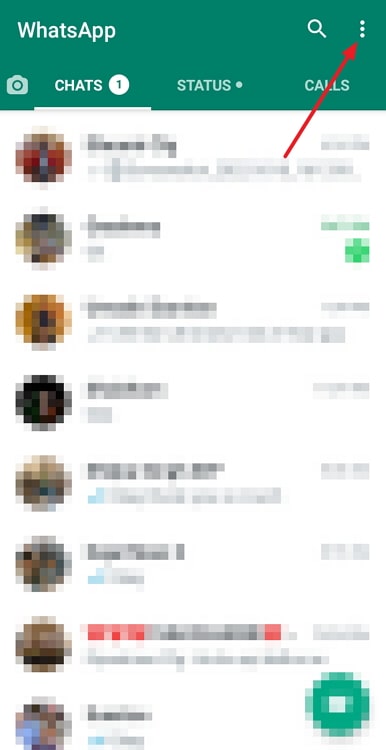
Step 3: From the options that will appear, select the last one called Settings.
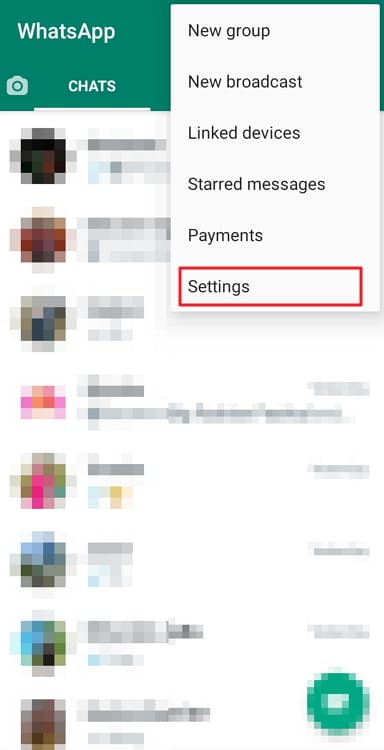
Step 4: Here, select option number two, called Privacy. You’ll see a toggle button next to the words Read receipts. Turn that button off, and you’re all set here!
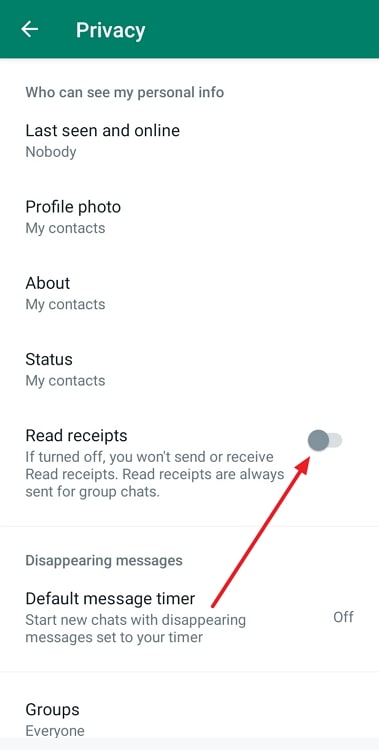
Final thoughts
Now that we’ve finished our blog for today, let us quickly recapitulate what we’ve talked about.
WhatsApp is among the most convenient and user-friendly platforms in the market to date. Such dedication only arises from a genuine desire to help make people’s lives easier; it’s one of the reasons why its founders never wanted ads on the platform.
For a platform with over two billion monthly active users, WhatsApp is remarkably good at keeping things up and running while adding newer features and updates. However, to err is to be human, and it would be unrealistic if it didn’t have its share of mishaps and mistakes that it learns from.
Also Read:


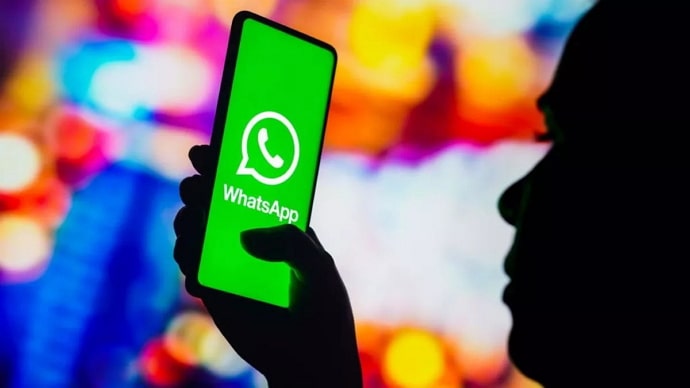

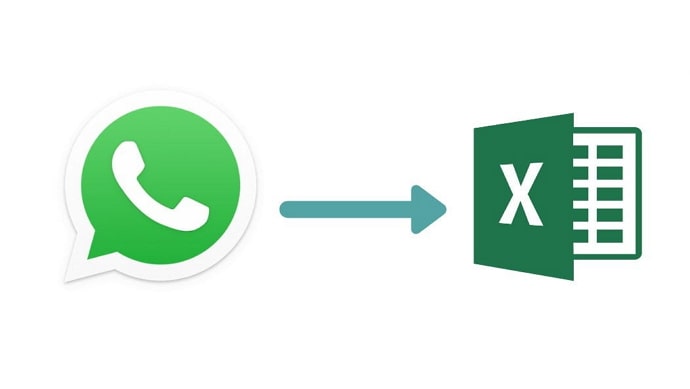
 Bitcoin
Bitcoin  Ethereum
Ethereum  Tether
Tether  XRP
XRP  Solana
Solana  USDC
USDC  Dogecoin
Dogecoin  Cardano
Cardano  TRON
TRON